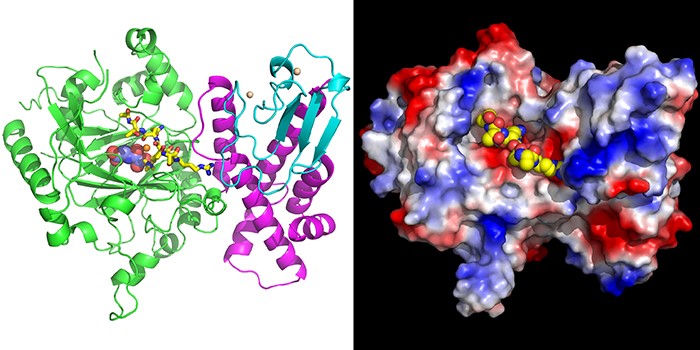
Structure of KDM5 Gives Insight to Histone Demethylation
Research, The Plant Cell, The Plant Cell: In a NutshellYang et al. reveal a conserved H3K4me3 recognition mechanism shared by both plant and animal KDM5 histone demethylases. The Plant Cell (2017). https://doi.org/10.1105/tpc.17.00666
By Z. Yang, Q. Qiu, X. Cao and J. Du
Background: Histone methylation is a conserved gene regulation mechanism in plants…
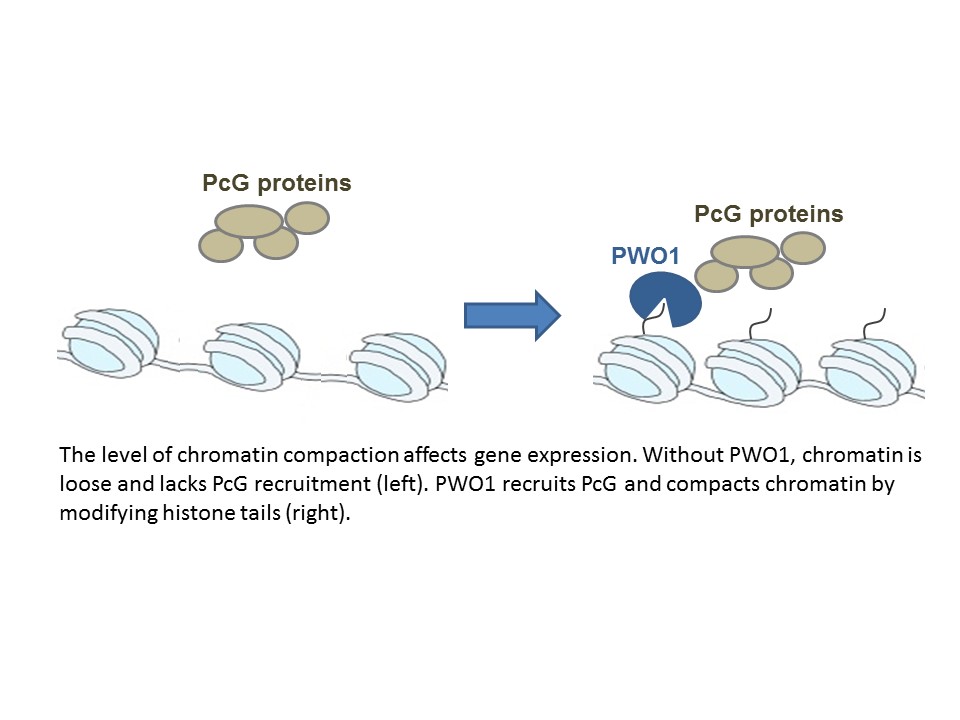
Recruiter of Chromatin Regulators
Research, The Plant Cell, The Plant Cell: In a NutshellHohenstatt et al. describe a new recruiter of PcG chromatin regulators affecting flowering and meristem identity in Arabidopsis. https://doi.org/10.1105/tpc.17.00117
By Pawel Mikulski
1) BACKGROUND: Polycomb group (PcG) proteins are key regulatory proteins involved in maintaining the ability (and…
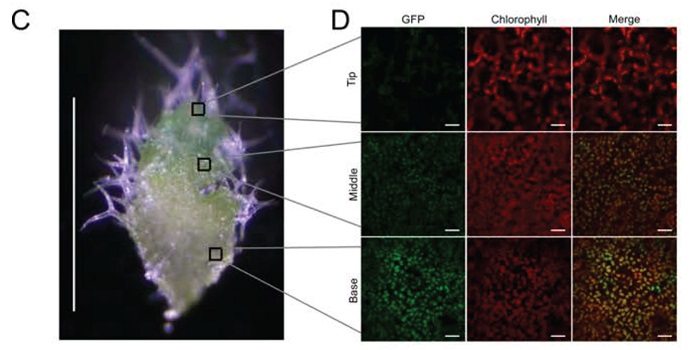
Control of retrograde signaling by rapid turnover of GENOMES UNCOUPLED 1 (Plant Physiol.)
Plant Science Research Weekly, Research, Research BlogCommunication between chloroplast and the nucleus is crucial to accomodate changes in the environment as well as regulate development of the chloroplast itself. Five GENOMES UNCOUPLED (GUN2 to -6) genes were previously described to regulate plastid-to-nucleus communication by affecting the synthesis…

Cell Cycle Regulation by Chlamydomonas Cyclin-Dependent Protein Kinases
Blog, Research, The Plant Cell, The Plant Cell: In BriefCyclins and cyclin-dependent protein kinases (CDKs) are critical regulators of cell cycle progression. Although CDK1 is essential for mitosis in animals and fungi, CDKA, the plant and algal ortholog of CDK1, is not essential for cell division in Arabidopsis (Nowack et al., 2012). By contrast, CDKB is…
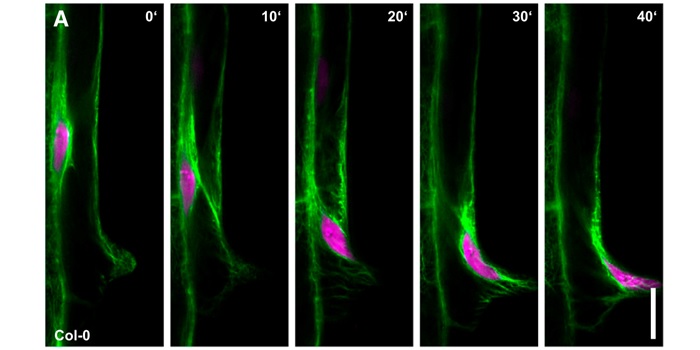
Auxin and ROP GTPase signaling of polar nuclear migration in root epidermal hair cells (Plant Physiology)
Blog, Plant Science Research Weekly, Research, Research BlogThe nucleus is a dynamic organelle whose positioning and movement is highly coordinated throughout plant development and differs between cell types. Upon the initiation and subsequent elongation of root hairs, the nucleus moves from a central position to the tip of the growing root hair. Nakamura et…

Cytokinin regulation in the endoplasmic reticulum (Plant Physiology)
Blog, Plant Science Research Weekly, ResearchCytokinin is a phytohormone involved in many plant processes such as cell proliferation, apical dominance, leaf senescence, tissue patterning, organ initiation, environmental responses… To allow for effective control of all these processes, cytokinin concentrations need to be continuously adjusted.…
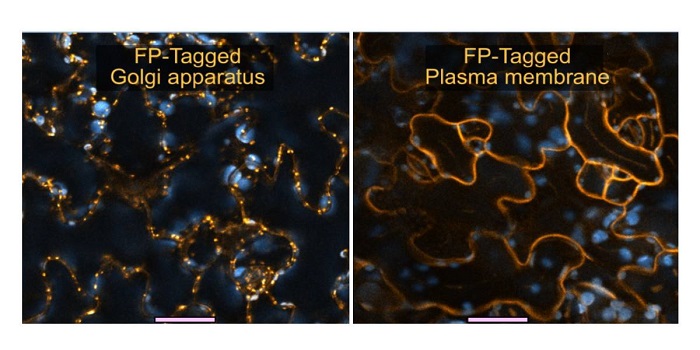
Update: Monitoring Polysaccharide Dynamics in the Plant Cell Wall
Blog, Plant Physiology, Plant Physiology: UpdatesBy Catalin Voiniciuc, Markus Pauly, and Björn Usadel
All plant cells are surrounded by complex walls that play a role in growth and differentiation of tissues. Walls provide mechanical integrity and structure to each cell, and represent an interface with neighboring cells and the environment (Somerville…
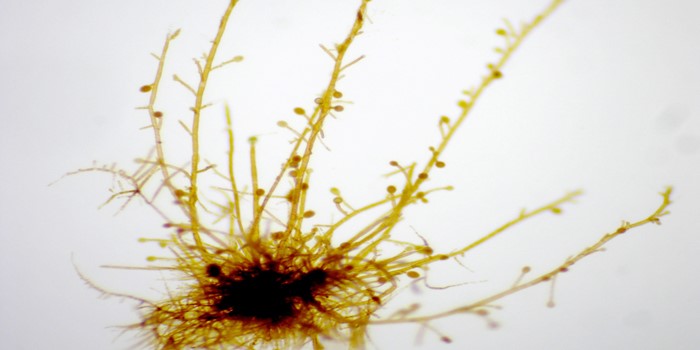
HOW TO BUILD A SEAWEED
Research, The Plant Cell, The Plant Cell: In a NutshellGodfroy et al investigate basal cell fate determination in the brown alga Ectocarpus https://doi.org/10.1105/tpc.17.00440
BACKGROUND: Brown algae are multicellular photosynthetic marine organisms living on rocky shores across the globe and representing one of the most developmentally complex groups…
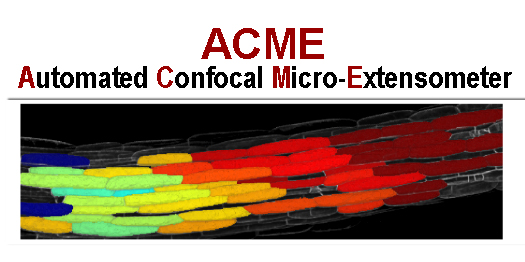
Stretching Plants with Cellular Resolution
Research, The Plant Cell, The Plant Cell: In a Nutshell
Robinson et al. develop a method to measure mechanical properties of plant tissue with cellular resolution https://doi.org/10.1105/tpc.17.00753
Background: Plant growth is controlled by the extensibility of the cell wall and the turgor pressure inside. The spatial regulation of these properties…

